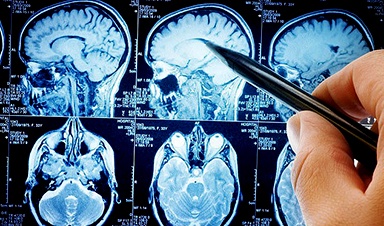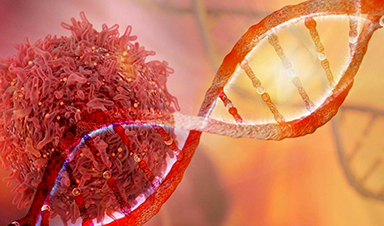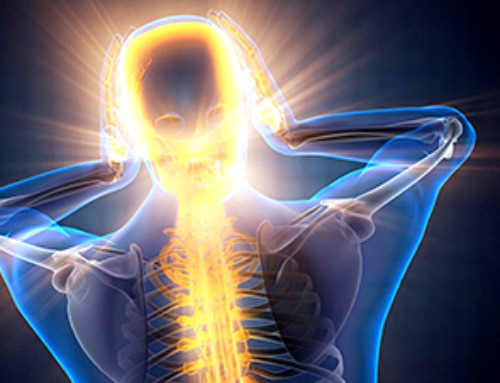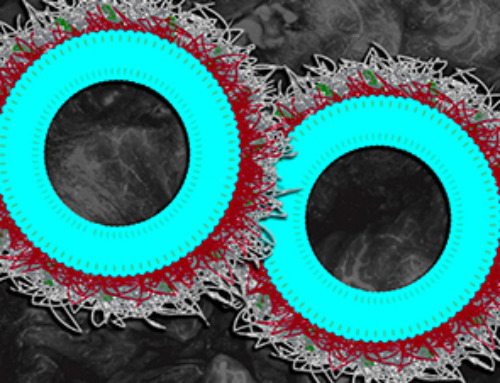Scientists have, for the first time, directly visualised the protein clusters in the brain believed to trigger Parkinson's disease, bringing them one step closer to potential treatments.
Parkinson's is a progressive incurable neurological disorder that affects the brain, but also the body more widely, and blights the lives of millions.
Patients typically suffer progressive tremors and movement problems that can eventually rob them of the independence.
While scientists have known for years that tiny clusters—called alpha-synuclein oligomers—likely cause Parkinson's to start developing in the brain, until now they have not been able to visualise these proteins in human brain tissue.
But in a breakthrough, experts from the University of Cambridge, University College London, the Francis Crick Institute and Polytechnique Montreal have developed a technique that allows them not only to see these clusters in the brain, but also count them.
For over a century, doctors have confirmed Parkinson's by the presence of large protein deposits, known as Lewy bodies. But now experts say these smaller, earlier-forming clusters may cause the damage to the brain cells associated with Parkinson's.
'If we can observe Parkinson's at its earliest stages, that would tell us a whole lot more about how the disease develops in the brain and how we might be able to treat it.'
Until now, these oligomers were too small to see at just a few nanometres long, but now the team have developed a technique called Advanced Sensing of Aggregates for Parkinson's Disease (ASA-PD) which uses lasers to mark proteins in post-mortem brain tissue.
Dr Rebecca Andrews, who carried out the lab study, added: 'This is the first time we've been able to look at oligomers directly in human brain tissue at this scale: it's like seeing stars in broad daylight.'
'Oligomers have been the needle in the haystack, but now that we know where those needles are, it could help us target specific cell types in certain regions of the brain,' added Professor Lucien Weiss, study co-lead author, from Polytechnique Montreal.
In the current study, published in the journal Nature Biomedical Engineering, researchers first analysed post-mortem brain tissue samples from people with Parkinson's and compared them to healthy individuals of a similar age.
Whilst the proteins were detected in both healthy and Parkinson's brains, in Parkinson's patients the oligomers were much larger, brighter and there were more of them—suggesting a direct link to the progression of the disease.
The team also identified a subclass of oligomers that appeared only in Parkinson's patients, which experts say could be the earliest visible markers of the disease—potentially years before classic symptoms appear.
'This method doesn't just give us a snapshot,' explained Prof Weiss.
'It offers a whole atlas of protein changes across the brain and similar technologies could be applied to other neurodegenerative diseases like Alzheimer's and Huntington's.'
Professor Sonia Gandhi, an expert in neurodegeneration at The Francis Crick Institute, added: 'The only real way to understand what is happening in human disease is to study the human brain directly, but because of the brain's sheer complexity, this is very challenging.'
The researchers now hope that this breakthrough will foster a better understanding of why, where and how these protein clusters form and leads to disease.
Currently diagnosis is normally based on the development of later stage symptoms like terms after other potential health conditions have been ruled out.
Parkinson's charities estimate more than one in four patients with the condition are misdiagnosed before getting the correct diagnosis.
Around 166,000 people in the UK are thought to be living with the debilitating disease, and the number is rising. By 2050, the number of people with Parkinson's worldwide is expected to double to a staggering 25million.
Early signs of Parkinson's include a tremor, stiffness, slowness of movement and loss of smell.
Balance problems such as issues with coordination and muscle cramps are other common signs.
Patients can also, as a consequence of their disease, frequently suffer from mental health problems like depression and anxiety.
While there are drugs that can help alleviate some of the symptoms, caused by the death of nerve cells in the brain that produce dopamine, there are no drugs that can slow to stop the disease itself.
Experts are still working to uncover what triggers the death of these nerves.
However, current thinking is that it's due to a combination of genetic changes and environmental factors.
Risk of developing the condition broadly increases with age, with most patients are diagnosed over 50.
News
Concerning New Research Reveals Colon Cancer Is Skyrocketing in Adults Under 50
Colorectal cancer is striking younger adults at alarming rates, driven by lifestyle and genetic factors. Colorectal cancer (CRC) develops when abnormal cells grow uncontrollably in the colon or rectum, forming tumors that can eventually [...]
Scientists Discover a Natural, Non-Addictive Way To Block Pain That Could Replace Opioids
Scientists have discovered that the body can naturally dull pain through its own localized “benzodiazepine-like” peptides. A groundbreaking study led by a University of Leeds scientist has unveiled new insights into how the body manages pain, [...]
GLP-1 Drugs Like Ozempic Work, but New Research Reveals a Major Catch
Three new Cochrane reviews find evidence that GLP-1 drugs lead to clinically meaningful weight loss, though industry-funded studies raise concerns. Three new reviews from Cochrane have found that GLP-1 medications can lead to significant [...]
How a Palm-Sized Laser Could Change Medicine and Manufacturing
Researchers have developed an innovative and versatile system designed for a new generation of short-pulse lasers. Lasers that produce extremely short bursts of light are known for their remarkable precision, making them indispensable tools [...]
New nanoparticles stimulate the immune system to attack ovarian tumors
Cancer immunotherapy, which uses drugs that stimulate the body’s immune cells to attack tumors, is a promising approach to treating many types of cancer. However, it doesn’t work well for some tumors, including ovarian [...]
New Drug Kills Cancer 20,000x More Effectively With No Detectable Side Effects
By restructuring a common chemotherapy drug, scientists increased its potency by 20,000 times. In a significant step forward for cancer therapy, researchers at Northwestern University have redesigned the molecular structure of a well-known chemotherapy drug, greatly [...]
Lipid nanoparticles discovered that can deliver mRNA directly into heart muscle cells
Cardiovascular disease continues to be the leading cause of death worldwide. But advances in heart-failure therapeutics have stalled, largely due to the difficulty of delivering treatments at the cellular level. Now, a UC Berkeley-led [...]
The basic mechanisms of visual attention emerged over 500 million years ago, study suggests
The brain does not need its sophisticated cortex to interpret the visual world. A new study published in PLOS Biology demonstrates that a much older structure, the superior colliculus, contains the necessary circuitry to perform the [...]
AI Is Overheating. This New Technology Could Be the Fix
Engineers have developed a passive evaporative cooling membrane that dramatically improves heat removal for electronics and data centers Engineers at the University of California San Diego have created an innovative cooling system designed to greatly enhance [...]
New nanomedicine wipes out leukemia in animal study
In a promising advance for cancer treatment, Northwestern University scientists have re-engineered the molecular structure of a common chemotherapy drug, making it dramatically more soluble and effective and less toxic. In the new study, [...]
Mystery Solved: Scientists Find Cause for Unexplained, Deadly Diseases
A study reveals that a protein called RPA is essential for maintaining chromosome stability by stimulating telomerase. New findings from the University of Wisconsin-Madison suggest that problems with a key protein that helps preserve chromosome stability [...]
Nanotech Blocks Infection and Speed Up Chronic Wound Recovery
A new nanotech-based formulation using quercetin and omega-3 fatty acids shows promise in halting bacterial biofilms and boosting skin cell repair. Scientists have developed a nanotechnology-based treatment to fight bacterial biofilms in wound infections. The [...]
Researchers propose five key questions for effective adoption of AI in clinical practice
While Artificial Intelligence (AI) can be a powerful tool that physicians can use to help diagnose their patients and has great potential to improve accuracy, efficiency and patient safety, it has its drawbacks. It [...]
Advancements and clinical translation of intelligent nanodrugs for breast cancer treatment
A comprehensive review in "Biofunct. Mater." meticulously details the most recent advancements and clinical translation of intelligent nanodrugs for breast cancer treatment. This paper presents an exhaustive overview of subtype-specific nanostrategies, the clinical benefits [...]
It’s Not “All in Your Head”: Scientists Develop Revolutionary Blood Test for Chronic Fatigue Syndrome
A 96% accurate blood test for ME/CFS could transform diagnosis and pave the way for future long COVID detection. Researchers from the University of East Anglia and Oxford Biodynamics have created a highly accurate [...]
How Far Can the Body Go? Scientists Find the Ultimate Limit of Human Endurance
Even the most elite endurance athletes can’t outrun biology. A new study finds that humans hit a metabolic ceiling at about 2.5 times their resting energy burn. When ultra-runners take on races that last [...]





















